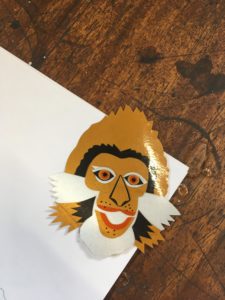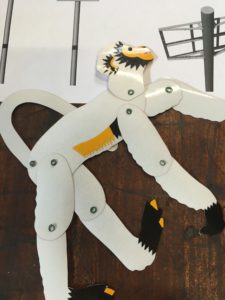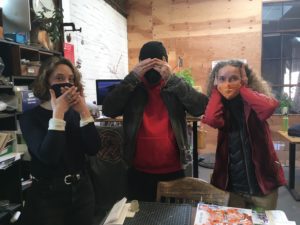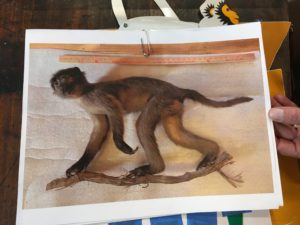By: Kristen Curry
In 1928, Roger Williams Park was the setting for a great escape. The park’s Monkey Island, located near Monument Lake, was the departure point for one enterprising resident monkey who made a famous escape while his keepers were cleaning the island’s surrounding moat. Jocko enjoyed two weeks of freedom around the city, with sightings reported near and far … before his final capture and return to the park.
Today, a new monkey escape is not only being prepared for but planned.
Inspired by the story of Jocko and his cross-town adventure, this spring the park is unveiling a new Monkey Installation off the shores of the Boathouse, where a band of larger-than-life size monkeys will take up residence on Flower Island.
The creative display is one of two being created by Providence’s Steel Yard, as part of the park’s 150th year celebration. The Steel Yard’s public arts program provides art at a number of sites around the state and also designed the fences around the community garden near the Botanical Center.
Work began in January. Tim Ferland, the Steel Yard’s public projects director, lives near the park and walks there daily with his dogs. He was excited to be part of the park’s 150th Birthday, contributing to new art projects going into the park for the anniversary celebrations. He comments, “I’m really excited to be working with the Park for the 150th celebrations. The Steel Yard is extremely happy to be partnering with the city for this.”
Tim first read the monkeys’ tale in The Jewel of Providence, a book of Roger Williams Park history, and took that as inspiration for the planned Monkey Island project. These modern monkeys will be made of aluminum, transformed to stand out in vivid, jewel-like colors using colorful vinyl, the kind used on stop signs. This stop-and-take-notice display will be viewable from a few points in the park – the bridge near the Botanical Center, the Marconi Memorial, and the back of the Boathouse – appearing to glow by night.


Credit for the monkeys’ design goes to local artist Marly Rogers of Mid-Ocean Studio who also created the art canopy found overhead in the Zoo’s Rainforest exhibit. Marley immersed herself in monkey study, including frequent visits to the park archives located at the Museum of Natural History, these past few months, helping this new band of simian residents come together. Marly says the creative possibilities of the project appealed to her. “I like monkeying around!” she laughs. The Parks Department design team also contributed to the design concept and artistic expression.

Lucia Perluck, Tim Ferland, and Marly Rogers monkeying around with Steel Yard designs for “Monkey Island”
Before the monkeys take form, a number of details needed to be worked out – expressions considered, personalities, etc. These colorful monkeys will represent family groups, the natural social grouping for these social animals. Care has been taken to make sure this is a fun and friendly display – less Planet of the Apes, more Barrel of Monkeys. They’ll stand larger than life, running close to 6 feet, tail to head, and are based on African Sooty Mangabeys.

Sooty Mangaby model photo
These new arrivals join the modern wave of art the public finds today in Roger Williams Park. Public art has always been part of the mission of the park and arrived in three distinct eras: the Gorham era (the Sentinel dog in the Zoo, 1896), the post-Gorham/WPA era (the Pulaski Memorial, 1953), and now today’s new generation of art which includes the recent sea lion sculpture and a Sheep Hill, also to be unveiled later this year.
The Steel Yard, housed in the former Providence Steel and Iron space in the city’s Olneyville/Valley section, is the perfect partner to connect past and present in the park. Using traditional techniques and analog skills, the art nonprofit produces public art that now graces a number of contemporary spaces across Rhode Island, such as Rocky Point State Park; you can find their work everywhere from Bristol to Central Falls. Their work is meant to be inviting and inclusive, available for all to enjoy, and continues a lineage of civic art handmade by Rhode Island craftsmen and -women and tradespeople.
The project is a partnership of the Providence Parks Department and the Roger Williams Park Conservancy. Explore the park’s art, memorials, and historic buildings at the Conservancy’s “Self-Guided Tour” created by the Providence Department of Planning and Development, the Providence Parks Department, and the Roger Williams Park Conservancy.
